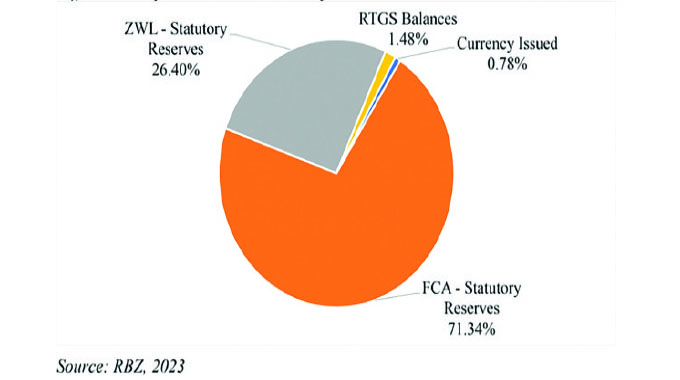Understanding the fall armyworm

 Jeffrey Gogo Climate Story
Jeffrey Gogo Climate Story
AS climates change, and global trade rises, crop-damaging pests such as fungi and moths have moved into new territories faster than other wildlife, according to a 2013 report in the journal Nature Climate Change. In the last 50 years, insects have expanded their range by dozens of kilometres a year, scientists say, blaming the movements on climate change. In Africa, a deadly pest called the fall armyworm has invaded large swathes of land, causing major damage to crops.
Zimbabwean farmers have never seen anything like it before. It is not your regular stalk borer or the African armyworm. So, controlling it means an entirely new approach. But the scarcity of information and knowledge on the characteristics of the invasive worm haven’t made the job of effective control any easier.
Local scientists and farmers are still trying to wrap their heads around the new invader. In this edition of the Climate Story, we take a closer look at the fall armyworm, trying to understand its origins, behaviour, impact and what it is farmers need to do to protect their crops, if anything.
What is the fall armyworm?
The fall armyworm is an invasive American moth, difficult to detect and to control. It was first noticed in Africa in January 2016, causing massive damage to crops in several West African countries, according to the International Institute of Tropical Agriculture (IITA) in Benin.
In its native regions, it can travel up to 2000 km each year in search of warmer climates. The worm is averse to the harsh winters of North America, returning to tropical habitat in the autumn, which Americans call “fall”, hence the name “fall armyworm”.
Speculation abounds on how the worm, which preys mostly on maize, millet, sorghum, rice, wheat and sugar cane, reached West Africa.
Others say it was accidental, shipped by air, or by climate change-induced strong winds. With more than 80 host plants identified, the fall armyworm can also attack crops like cowpea, groundnuts, potato, soyabean and cotton, according to the IITA.
The pest is known to destroy over 70 percent of the crop it invades, says David Phiri of the Food and Agriculture Organisation, Harare office.
When did the worm enter Zimbabwe? How much damage has it caused?
The worm was detected in Southern Africa more than a month ago. It is about this time that it may have entered Zimbabwe.
FAO says the fall armyworm is now present in Namibia, South Africa, Mozambique, Malawi and Zambia, threatening agriculture output in a season of plenteous rainfall. Authorities here say it has spread to nearly all the country’s ten provinces. The amount of damage caused in Zimbabwe so far is unknown.
How different is the fall armyworm from the African armyworm?
In Zambia, where the worm first attacked before crossing over into Zimbabwe, farmers mistook it for the stalk borer.
It created small holes in the stem of the maize plant, says Bridget Oconnor, an organic farming expert who has worked with Fambidzanai Permaculture in Harare, but now based in Zambia.
However, that’s not the way of the African armyworm, scientists at the International Centre of Insect Physiology and Ecology (ICIPE) in Kenya concluded.
The African armyworm is usually hatched somewhere outside the farms and then steadily eat their way through everything in their path en masse, they say. By contrast, the fall armyworm moth lays its eggs on the host plant. It does not eat everything and as it grows it moves up the maize plant.
At that stage the worm would have destroyed or eaten most of its competitors, Oconnor says.
The fall armyworm even bores into the ears (cobs) and does far more damage than the stalk borer or bollworm, which usually attack at cob stage.
The fall armyworm makes a lot of yellowish debris and whitish powder on the leaves and in the funnel where they are, she says.
What action can a small farmer take in the event of an attack by the fall armyworm, or to combat such an attack?
There is a limit to what the small farmer can do, really. Here is a new pest, only a year old in Africa and a couple of months old in southern Africa, not much is known about its behaviour or the methods most effective at bringing the worm under control.
Wonder Chabikwa, president of the Zimbabwe Commercial Farmers Union (ZCFU), which represents 25 000 farmers, said farmers, both small and large, were taken by surprise when the fall armyworm laid siege on their farms.
Understandably, most panicked and didn’t know what to do. Early attempts at applying usual contact pesticides to deal with what they thought to be the stalk borer proved unsuccessful until Government stepped in. Still, the damage is largely undone, Chabikwa said.
In Zambia, smallholder farmers in the district of Chongwe have come up with some bizarre methods of controlling the worm – and its working.
Farmers there are putting sandy soil into the maize funnels, according to Bridget Oconnor. The sand is abrasive to the skin of the fall armyworm and can kill it, she adds.
It is recommended that there be regular scouting and application of sand at first sight of damage, or in every funnel of maize at knee height.
Other Zambian farmers find applying ash equally as successful. Here, some farmers have been reported to be using washing powder successfully, but insect specialists aren’t impressed.
Is there hope that this pest can be controlled more effectively across southern Africa?
Experts say those farms that are involved in sustainable organic farming – farming the natural way free of fertilisers and pesticides – with a lot of diversity and ground cover have proved resilient to the fall armyworm attack. This is because the ecosystem on the organic farms is already well balanced with a lot of diversity, including flowers that attract the adults of most pest predators, they say. While scientific efforts go into the development of pesticides or predators to deal with the worm, farmers could switch to organic agriculture.
How likely is it that the fall armyworm will strike again in the 2018 summer and beyond?
Most likely. In just about a year, the worm has spread rapidly from West Africa into six Southern African countries, and settled in pretty well. It appears the pest is here for the long-haul simply because “it likes our environment.”
Mr Chabikwa said he expects the fall armyworm to multiply next cropping season due to a lack of information and effective control.
God is faithful.






Comments